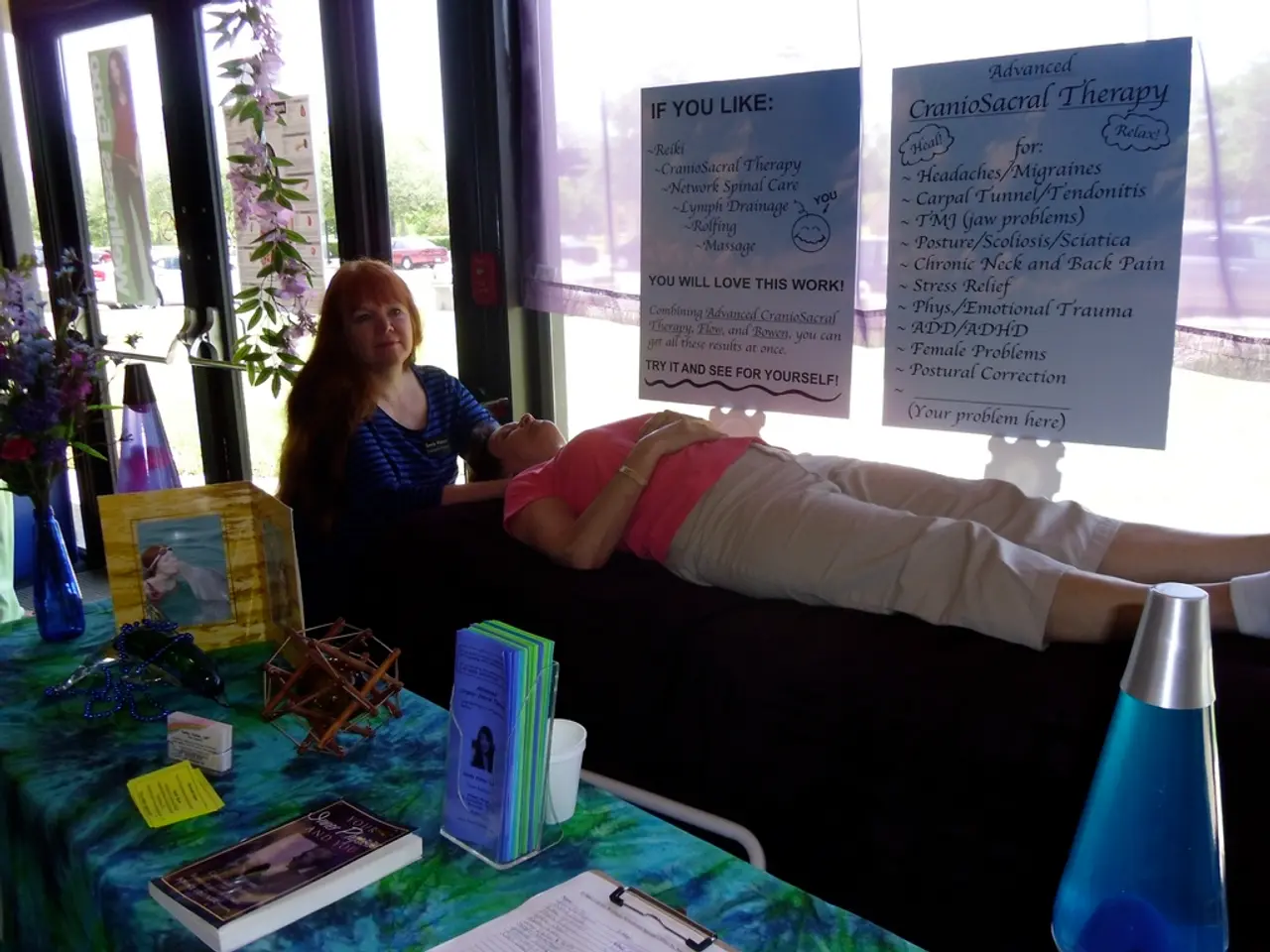Exploring the Realm of Cold Therapy: Ice Immersion and Cryogenic Treatment
In the world of sports and fitness, cold therapy has been a trusted ally for centuries, offering relief from inflammation, muscle soreness, and aiding in recovery. This article delves into the scientific basis behind cold therapy's effectiveness, exploring its potential benefits and the mechanisms at play.
Cold therapy, encompassing ice baths and cryotherapy, works primarily through several physiological mechanisms. One of the key mechanisms is **vasoconstriction**, which causes blood vessels to narrow, reducing blood flow to muscles, and subsequently limiting the accumulation of inflammatory molecules and extracellular fluid. This helps reduce swelling and inflammation after exercise-induced muscle damage.
By limiting inflammation and controlling swelling, cold therapy also lessens **delayed onset muscle soreness (DOMS)**, a common post-exercise discomfort. The numbing effect of cold further reduces nerve activity related to pain sensations, providing effective pain relief for sore or injured muscles.
When coming out of cold exposure, **vasodilation** (widening of blood vessels) occurs, which improves circulation. This process helps flush out metabolic waste products such as lactic acid and enhances oxygen and nutrient delivery to muscles, accelerating repair and shortening recovery time between training sessions.
Cold therapy has also been shown to reduce systemic inflammation and lower cortisol levels, a stress hormone. This hormonal rebalancing can further support recovery by mitigating the physiological stress response triggered by intense exercise.
Combining cold therapy with compression (cryocompression) further amplifies recovery benefits by accelerating inflammation resolution and reducing muscle soreness and pain. Compression alone helps attenuate muscle damage markers and edema, but its impact on pro-inflammatory cytokines is less clear without cold exposure.
In summary, cold therapy works primarily through vasoconstriction to reduce inflammation and swelling, through pain relief via nerve numbing, and through improved clearance of metabolic waste during post-cold vasodilation, all of which facilitate faster muscle recovery and reduced soreness. These mechanisms are well-supported by scientific studies involving markers of inflammation, muscle damage, and functional recovery outcomes in athletes.
For those new to cold therapy, it is recommended to start with shorter sessions (2-3 minutes) and gradually increase the duration as the body adapts to the cold. Cold therapy triggers the release of endorphins, the body's natural "feel-good" hormones, which can improve mood, reduce stress, and provide a sense of euphoria.
While generally safe, cold therapy can be risky for individuals with certain medical conditions, such as poor circulation, heart disease, or cold sensitivity. Always consult a healthcare provider before starting cold therapy. The water temperature for an ice bath should be between 50°F and 59°F (10°C to 15°C) to avoid frostbite or hypothermia.
In conclusion, cold therapy offers a powerful tool for athletes and fitness enthusiasts seeking to reduce inflammation, alleviate muscle soreness, and enhance recovery. By understanding the key scientific mechanisms at play, individuals can make informed decisions about incorporating cold therapy into their recovery routines. As with any new fitness regimen, it is essential to consult a healthcare professional and start gradually to ensure safety and optimal results.
Cold therapy, such as ice baths and cryotherapy, utilizes a physiological mechanism called vasoconstriction to narrow blood vessels and restrict blood flow to muscles, subsequently limiting inflammation and swelling after exercise-induced muscle damage. Cold therapy lessens delayed onset muscle soreness (DOMS) by reducing inflammation and pain sensations. Following cold exposure, vasodilation occurs, improving circulation and accelerating repair by flushing out metabolic waste products and boosting oxygen and nutrient delivery.
Cold therapy can reduce systemic inflammation and lower cortisol levels, supporting recovery by mitigating the physiological stress response triggered by intense exercise. Combining cold therapy with compression (cryocompression) can further accelerate recovery by resolving inflammation more quickly. Studies on markers of inflammation, muscle damage, and functional recovery outcomes in athletes support these mechanisms.
For beginners, it's suggested to begin with shorter sessions (2-3 minutes) of cold therapy and gradually increase the duration as the body adapts to the cold. Cold therapy triggers the release of endorphins, which can improve mood, reduce stress, and provide a sense of euphoria. Cold therapy can be risky for individuals with certain medical conditions, like poor circulation, heart disease, or cold sensitivity, so always consult a healthcare provider before starting cold therapy. The water temperature for an ice bath should be within the range of 50°F and 59°F (10°C to 15°C) to avoid frostbite or hypothermia.
In sum, cold therapy, a potent tool for athletes and fitness enthusiasts, facilitates faster muscle recovery and reduced soreness by reducing inflammation, alleviating pain, and improving circulation. By understanding the key scientific mechanisms, individuals can make informed decisions about incorporating cold therapy into recovery routines, ensuring safety and optimal results through consultation with healthcare professionals and a gradual introduction.




